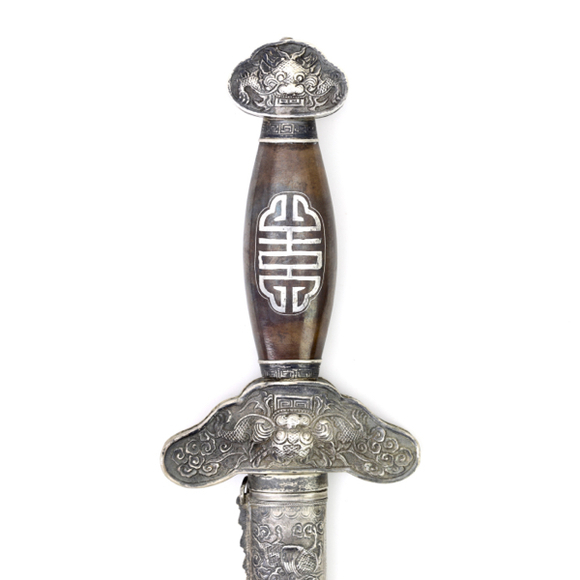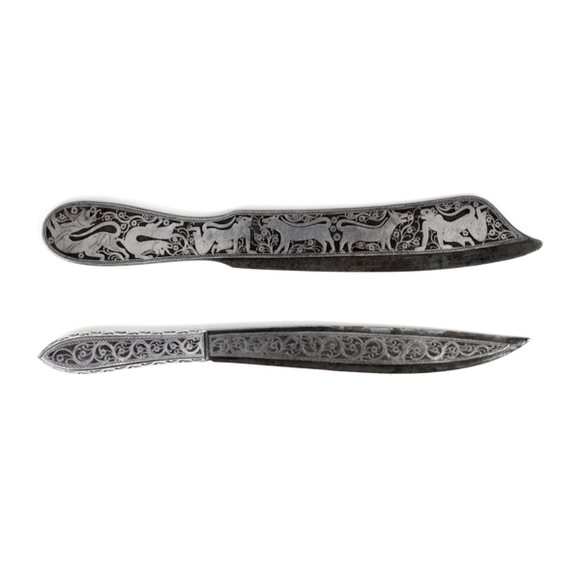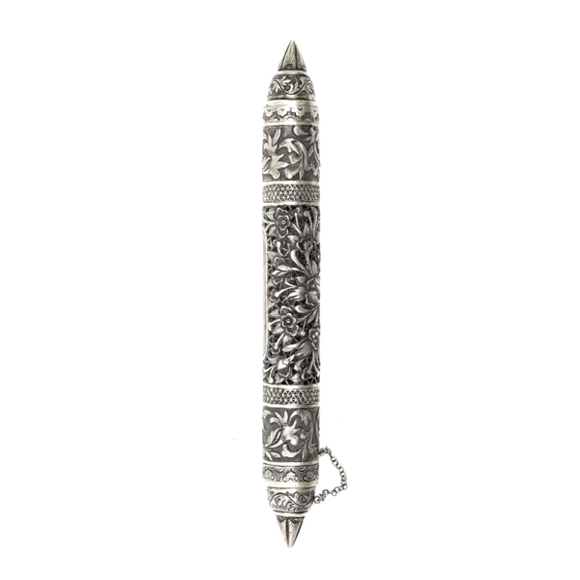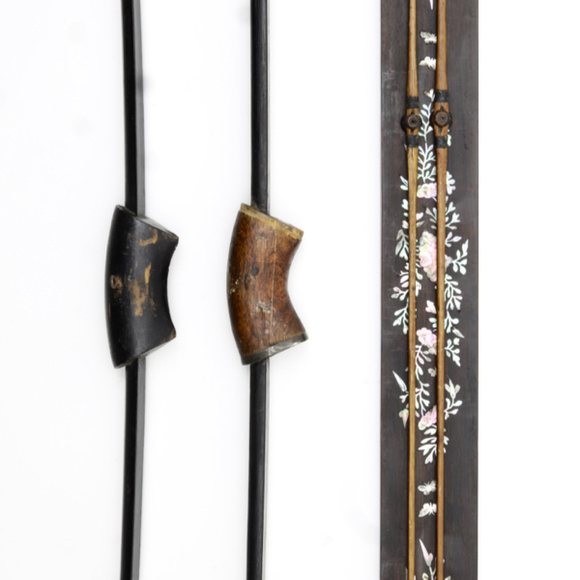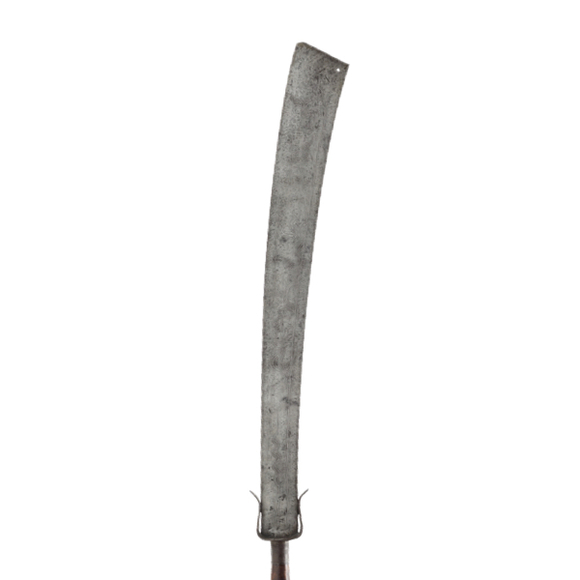A very rare ceremonial variety with copper scabbard inlaid with different alloys, and a brass blade.

92.6 cm
62.5 cm
571 grams
5 cm from guard
Iron or steel, copper alloy, wood
Southeast Asia
Probably Thai
17th-19th century
Most likely late 18th century
From a private collection in Europe
Introduction
Japan saw a period of rapid change in the 16th and early 17th centuries Japan. The country saw the first European visitors who brought Christianity, which caught on rapidly among the population. The 16th century was also a period of brutal fighting, known as the Sengoku period. It was ended by a series of great unifiers, of whom Tokugawa Ieyasu came out on top after the Battle of Sekigahara in 1600. Japan then started to close itself off from foreign influences, and started to prosecute Christianity. As a result, many Christian Japanese fled the country. China saw them as pirates and did not welcome them warmly, as a result, many became pirates and others settled in more welcoming areas throughout Southeast Asia.
Their presence left quite an impression on the locals, and you see strong Japanese influences on Southeast Asian weapons from the late 16th century onwards.
This example
A long Southeast Asian dha in excavated condition.
Its blade is very local in construction, with a wedge-shaped cross-section, a flat spine, and a curvature that is at its most extreme near the tip. The hilt is made of wood, covered with copper alloy sheet. It is reinforced with 21 ribbed bands, of which two are now missing and two are cracked.
The guard is very interesting, in that it is a local copy of the so-called namako tsuba or "Sea cucumber guard". This style of tsuba is strongly associated with Miyamoto Musashi (1584-1645), widely considered to have been Japan's best swordsman. Musashi favored this style of tsuba and made a few of them himself.
The small size of this one indicates it is of local make, and not a Japanese import. Even a small tsuba for a Japanese dagger would be slightly bigger. It was however very closely modeled after Japanese examples. The Tokugawa decided to ban Christianity in 1614, leading to a surge of refugees until they closed the borders and forbid migration in the 1630s. Musashi fought his most notable duel in 1612, leading to a height of his fame that coincides the stream of refugees caused by the 1614 bans.
Origin
This dha is part of a larger group of swords, and while there is quite some variation the style of the weapons the condition is all very comparable. I carbon dated two of them, with somewhat inconclusive results. See my article: Scientific analysis of two Southeast Asian swords.
Many of these in local museums seem to be attributed to the Battle of Rạch Gầm-Xoài Mút. It was fought on January 20, 1785 between the Vietnamese Tây Sơn forces and an army of Siamese, Cambodian, Nguyễn and Hà Tiên troops. The forces met in the Meikong river delta in south Vietnam, present-day Tiền Giang Province . On the Siamese side there were some 20.000 sailors and 30.000 infantry, using 300 warships, aided by some 3000-4000 troops of the north Vietnamese Gia Long emperor. On the Tây Sơn side were 30.000 men with 55 warships, 100 sailing boats and 300 canoes.
It resulted in a decisive Tây Sơn victory, with an estimated 40.000 killed on the Siamese side, and their entire navy destroyed. Today, treasure hunters still dredge and dig up swords from this battle, and it seems very likely that the ones on the market -including this example- can be dated back to that event.







An exceedingly rare set with fine mother of pearl inlaid string board

